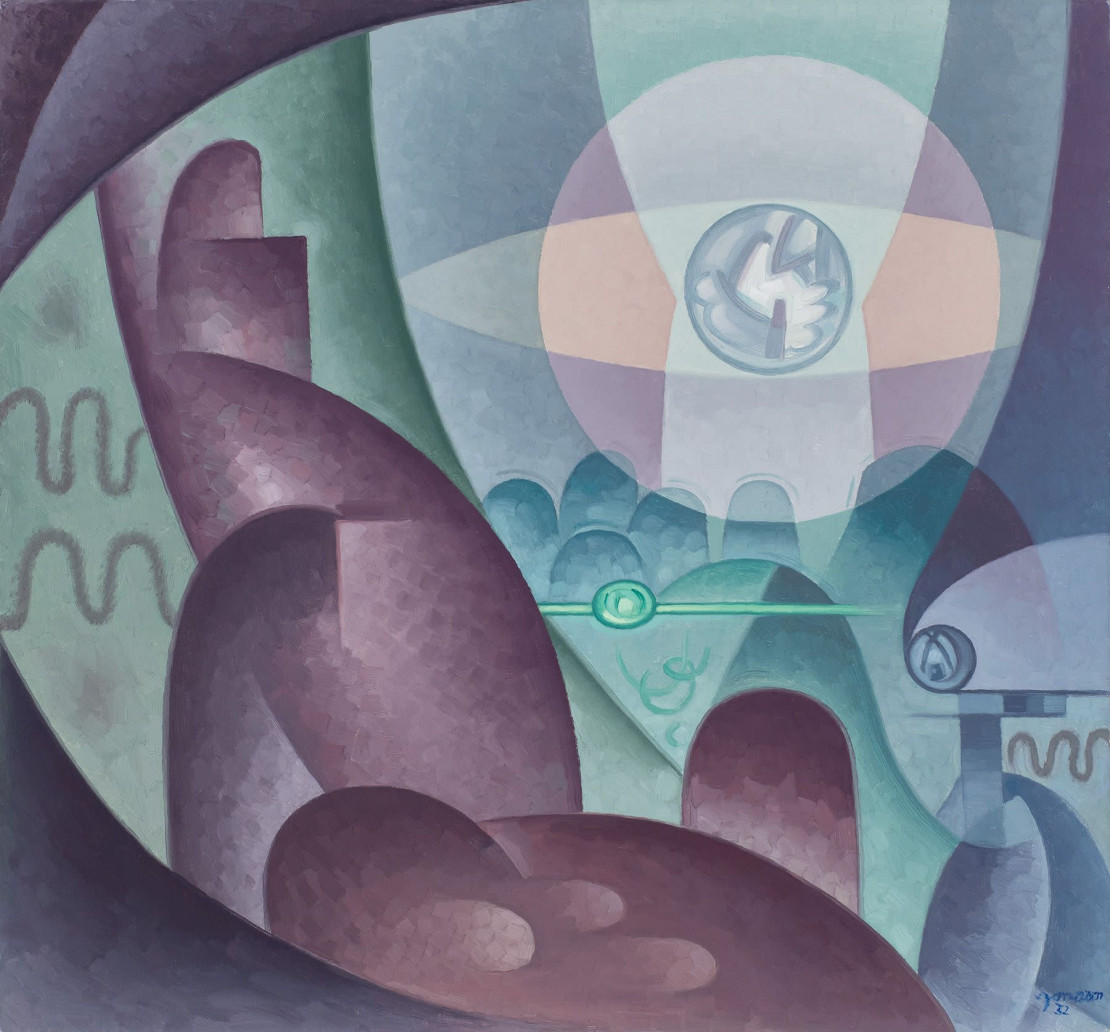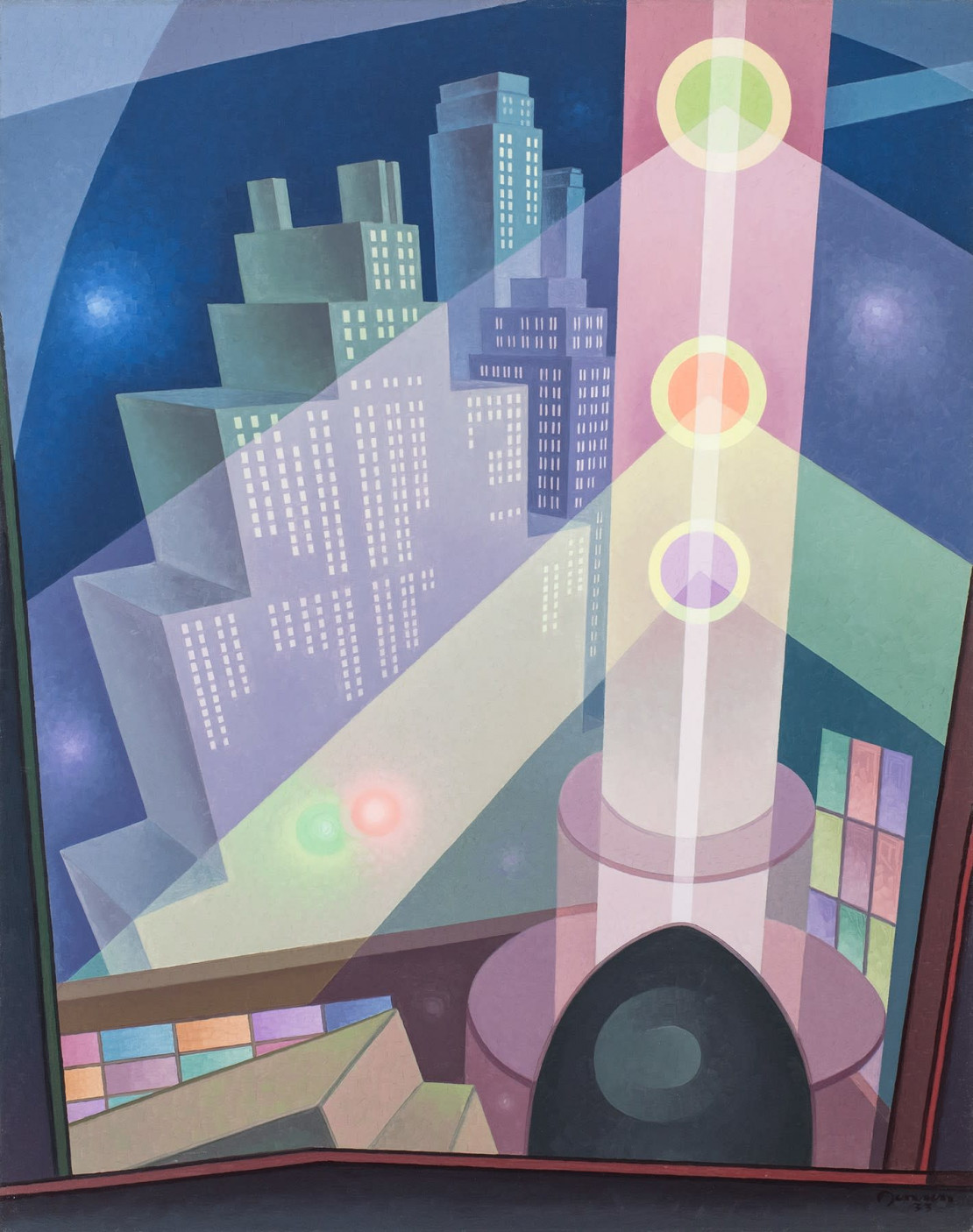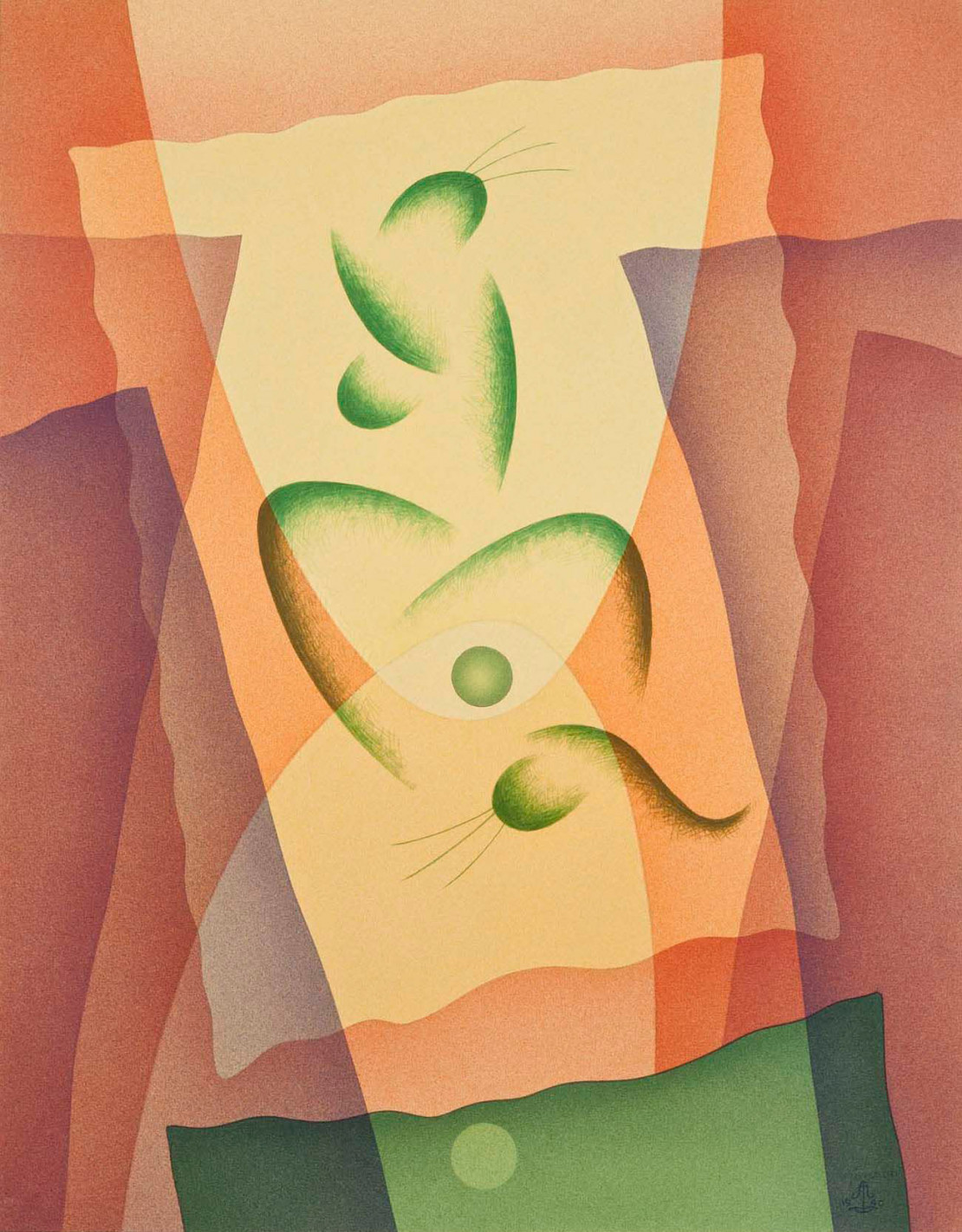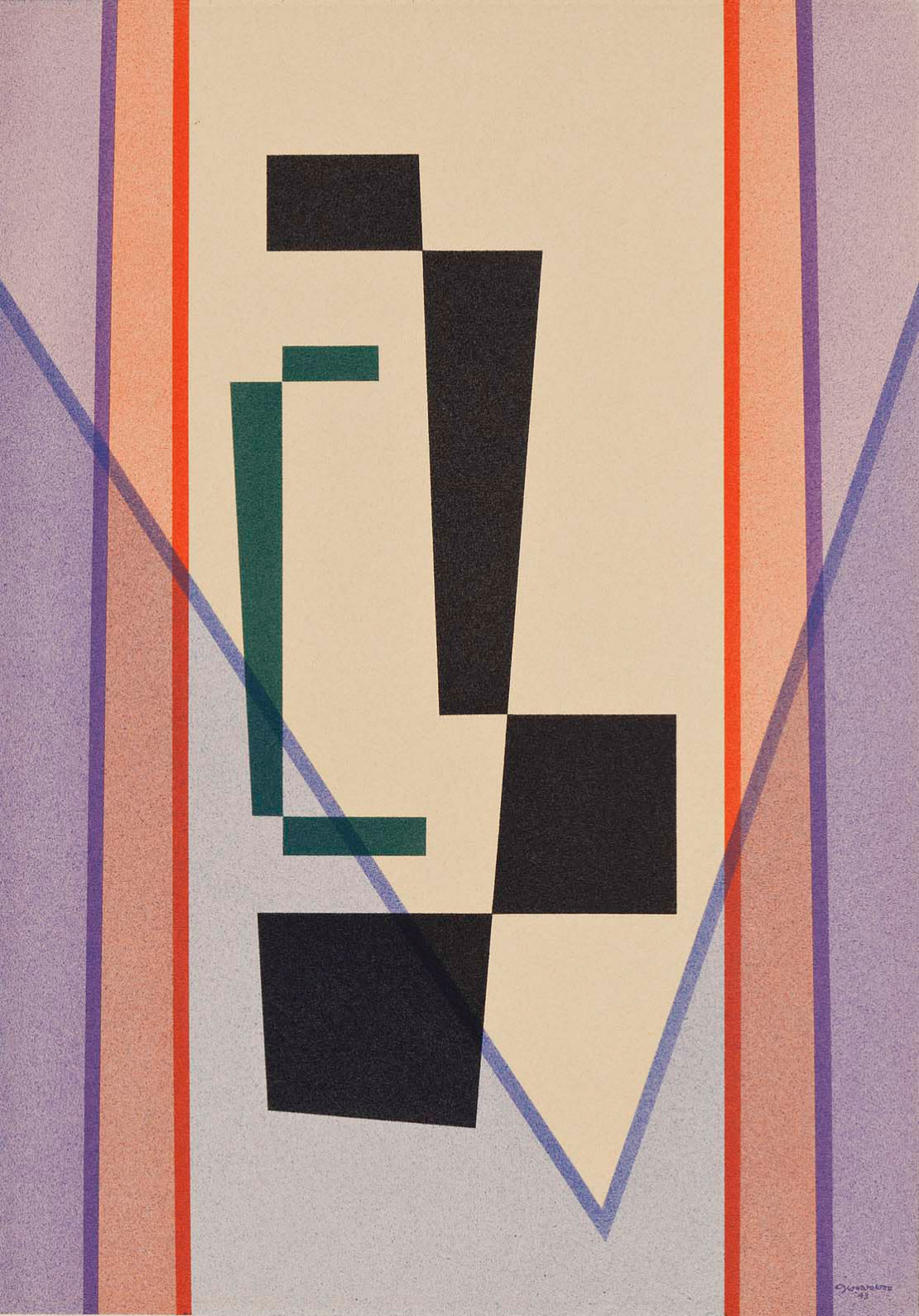Raymond Jonson
1891–1982
Works Available

- Variations on a Rhythm-C, 1931
- oil on canvas
- 33 x 29 inches / 83.8 x 73.7 cm
- signed

- Sphere, 1932
- oil on canvas
- 24 1/4 x 26 1/4 inches / 61.6 x 66.7 cm
- signed

- City Lights, 1933
- oil on canvas in artist's original painted frame
- 48 x 38 inches / 121.9 x 96.5 cm
- signed

- Chromatic Contrasts No. 2, 1935
- oil on canvas
- 29 1/8 x 33 1/8 inches / 74 x 84.1 cm
- signed

- Chromatic Contrasts No.6, 1937
- oil on canvas
- 28 1/4 x 40 1/8 inches / 71.8 x 101.9 cm
- signed

- Watercolor No.5, 1940
- watercolor on Whatman board
- 34 x 26 1/8 inches / 86.4 x 66.4 cm
31 x 24 inches / 78.7 x 61 cm sight size - signed

- Improvisation No.2, 1943
- casein tempera on paper mounted on Whatman board
- 24 x 17 1/2 inches / 61 x 44.5 cm
21 1/4 x 15 7/8 inches / 54 x 40.3 cm sight size - signed
1/7
All artworks displayed above are currently available. To inquire about additional works available by this artist, please contact the gallery.
